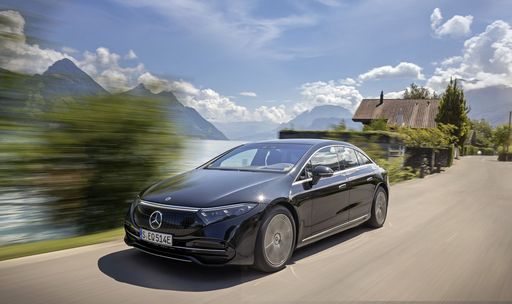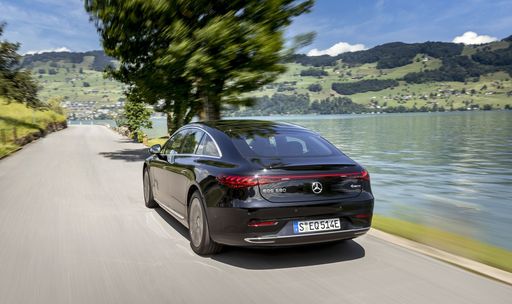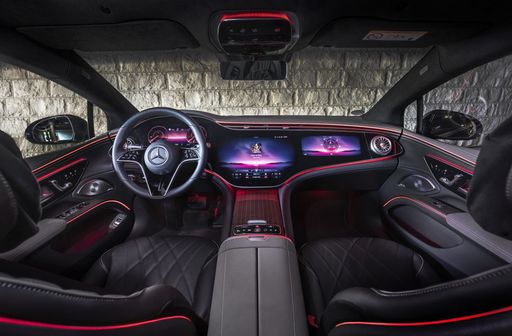Alfa Romeo Junior vs Mercedes EQS – Differences & prices compared
Both models have their strengths – but which one suits you more?
Compare performance, efficiency, price and space directly: Alfa Romeo Junior or Mercedes EQS?
Costs and Efficiency:
Price and efficiency are key factors when choosing a car – and this is often where the real differences emerge.
Alfa Romeo Junior has a convincingly advantage in terms of price – it starts at 25700 £, while the Mercedes EQS costs 93900 £. That’s a price difference of around 68229 £.
In terms of energy consumption, the advantage goes to the Alfa Romeo Junior: with 15.10 kWh per 100 km, it’s slight more efficient than the Mercedes EQS with 16.50 kWh. That’s a difference of about 1.40 kWh.
As for range, the Mercedes EQS performs decisively better – achieving up to 816 km, about 406 km more than the Alfa Romeo Junior.
Engine and Performance:
Power, torque and acceleration are the classic benchmarks for car enthusiasts – and here, some clear differences start to show.
When it comes to engine power, the Mercedes EQS has a clearly edge – offering 544 HP compared to 280 HP. That’s roughly 264 HP more horsepower.
In acceleration from 0 to 100 km/h, the Mercedes EQS is evident quicker – completing the sprint in 4.40 s, while the Alfa Romeo Junior takes 5.90 s. That’s about 1.50 s faster.
In terms of top speed, the Mercedes EQS performs minimal better – reaching 210 km/h, while the Alfa Romeo Junior tops out at 206 km/h. The difference is around 4 km/h.
There’s also a difference in torque: Mercedes EQS pulls significantly stronger with 858 Nm compared to 345 Nm. That’s about 513 Nm difference.
Space and Everyday Use:
Whether family car or daily driver – which one offers more room, flexibility and comfort?
Both vehicles offer seating for 5 people.
In curb weight, Alfa Romeo Junior is decisively lighter – 1380 kg compared to 2545 kg. The difference is around 1165 kg.
In terms of boot space, the Mercedes EQS offers noticeable more room – 610 L compared to 415 L. That’s a difference of about 195 L.
In maximum load capacity, the Mercedes EQS performs evident better – up to 1770 L, which is about 490 L more than the Alfa Romeo Junior.
When it comes to payload, Mercedes EQS distinct takes the win – 565 kg compared to 420 kg. That’s a difference of about 145 kg.
Who wins the race?
The Mercedes EQS proves to be edges ahead and therefore becomes our DriveDuel Champion!
Mercedes EQS is the better all-rounder in this comparison.
 @ Mercedes-Benz Group Media
@ Mercedes-Benz Group Media
Mercedes EQS
Alfa Romeo Junior
The Alfa Romeo Junior captures the essence of Italian design with its sleek lines and compact dimensions, making it an icon of elegance and performance. With a spirited driving experience and a charming retro aesthetic, it appeals to enthusiasts and casual drivers alike. This delightful car embodies the brand's rich heritage while remaining a fun and engaging option for those seeking a unique automotive experience.
details @ Alfa Romeo / Stellantis Media
@ Alfa Romeo / Stellantis Media
 @ Alfa Romeo / Stellantis Media
@ Alfa Romeo / Stellantis Media
 @ Alfa Romeo / Stellantis Media
@ Alfa Romeo / Stellantis Media
Mercedes EQS
The Mercedes-Benz EQS redefines luxury in the realm of electric vehicles, combining exceptional comfort with cutting-edge technology. Its sleek and aerodynamic design is a testament to both elegance and efficiency, setting new standards for the brand. Inside, the EQS offers a serene and spacious cabin equipped with the latest advancements, ensuring a refined driving experience.
details @ Mercedes-Benz Group Media
@ Mercedes-Benz Group Media
 @ Mercedes-Benz Group Media
@ Mercedes-Benz Group Media
 @ Mercedes-Benz Group Media
@ Mercedes-Benz Group Media
 @ Mercedes-Benz Group Media
@ Mercedes-Benz Group Media
 @ Mercedes-Benz Group Media
@ Mercedes-Benz Group Media
 @ Alfa Romeo / Stellantis Media
@ Alfa Romeo / Stellantis Media
|
 @ Mercedes-Benz Group Media
@ Mercedes-Benz Group Media
|
|
|
|
Costs and Consumption |
|
|---|---|
|
Price
25700 - 41600 £
|
Price
93900 - 123500 £
|
|
Consumption L/100km
4.8 - 5.4 L
|
Consumption L/100km
-
|
|
Consumption kWh/100km
15.1 - 17.5 kWh
|
Consumption kWh/100km
16.5 - 17.2 kWh
|
|
Electric Range
344 - 410 km
|
Electric Range
790 - 816 km
|
|
Battery Capacity
0.4 - 51 kWh
|
Battery Capacity
118 kWh
|
|
co2
0 - 119 g/km
|
co2
0 g/km
|
|
Fuel tank capacity
44 - 45 L
|
Fuel tank capacity
-
|
Dimensions and Body |
|
|---|---|
|
Body Type
SUV
|
Body Type
Hatchback
|
|
Seats
5
|
Seats
5
|
|
Doors
5
|
Doors
5
|
|
Curb weight
1380 - 1689 kg
|
Curb weight
2545 - 2655 kg
|
|
Trunk capacity
340 - 415 L
|
Trunk capacity
610 L
|
|
Length
4173 mm
|
Length
5223 mm
|
|
Width
1781 mm
|
Width
1926 mm
|
|
Height
1505 - 1538 mm
|
Height
1512 mm
|
|
Max trunk capacity
1205 - 1280 L
|
Max trunk capacity
1770 L
|
|
Payload
390 - 420 kg
|
Payload
550 - 565 kg
|
Engine and Performance |
|
|---|---|
|
Engine Type
Electric, Petrol MHEV
|
Engine Type
Electric
|
|
Transmission
Automatic
|
Transmission
Automatic
|
|
Transmission Detail
Dual-Clutch Automatic, Reduction Gearbox
|
Transmission Detail
Reduction Gearbox
|
|
Drive Type
Front-Wheel Drive, All-Wheel Drive
|
Drive Type
All-Wheel Drive, Rear-Wheel Drive
|
|
Power HP
136 - 280 HP
|
Power HP
360 - 544 HP
|
|
Acceleration 0-100km/h
5.9 - 9.1 s
|
Acceleration 0-100km/h
4.4 - 6.2 s
|
|
Max Speed
150 - 206 km/h
|
Max Speed
210 km/h
|
|
Torque
230 - 345 Nm
|
Torque
568 - 858 Nm
|
|
Number of Cylinders
3
|
Number of Cylinders
-
|
|
Power kW
100 - 207 kW
|
Power kW
265 - 400 kW
|
|
Engine capacity
1199 cm3
|
Engine capacity
-
|
General |
|
|---|---|
|
Model Year
2024 - 2025
|
Model Year
2024
|
|
CO2 Efficiency Class
A, C, D
|
CO2 Efficiency Class
A
|
|
Brand
Alfa Romeo
|
Brand
Mercedes-Benz
|
What drive types are available for the Alfa Romeo Junior?
Available configurations include Front-Wheel Drive or All-Wheel Drive.
The prices and data displayed are estimates based on German list prices and may vary by country. This information is not legally binding.
